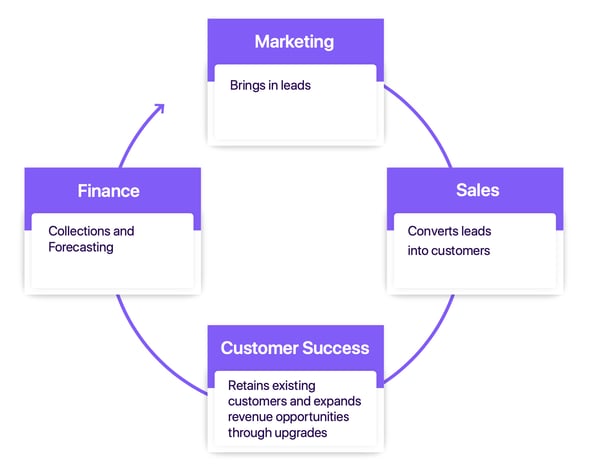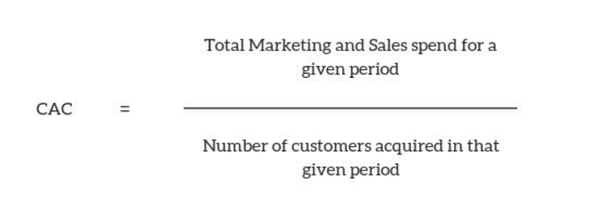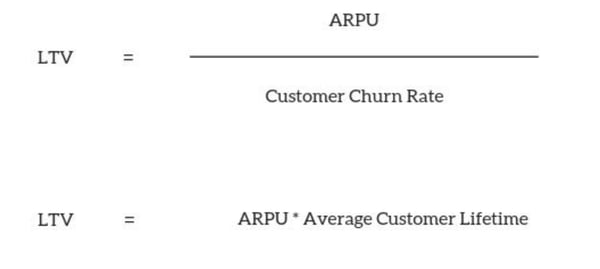August 21, 2020
 by Nupura Ughade / August 21, 2020
by Nupura Ughade / August 21, 2020

Most people have had library and cable TV subscriptions for as long as they can remember.
So it's not new to hear about subscription services. What’s new is the rise of the digital economy, and with that, online subscriptions.
Nowadays you can get a subscription for just about anything. Clothing boxes, makeup, music, and even murder mysteries! So what is this subscription business model wave that every business wants to ride? Let’s dive in and find out!
Simply put, a subscription model is a business model that charges their customers on a recurring basis at regular intervals for continued access to their product/services. Most subscription businesses charge their customers on a monthly or yearly basis for their products or services and generate a ‘recurring revenue’ stream.
These days, subscriptions are almost everywhere! A lot of us start our day with Spotify on a good note (pun intended!) and end it with some Netflix binging. If you are still bored, how about playing some games on the PlayStation or listening to a book on Audible. All of them come with subscription models.
But why this rise and why now? Consumer preferences have undergone monumental changes. Relevance and personalization is the need of the hour - and the subscription business model is all about that. The pandemic has served as a tipping point for businesses to turn towards their digital assets.
For instance, there’s a 2x increase in demand for e-learning subscription services. Similarly, a predominantly non-digital service like newspapers have seen this shift too. The New York Times signed up a record 587,000 net new digital subscribers in Q1 2020. It took The Times 18 months to get to close to that number when they first launched their paywall in 2011.
However, subscription business models aren’t limited to digital products. A classic example of this is curated subscription boxes. The only difference here is the additional element of physical logistics.
Subscription business models work when you are able to acquire a number of paying customers, or rather, subscribers and retain them. A subscription can be automatically renewed using an authorized credit card or a checking account. But what makes subscription business models so lucrative is their ability to generate recurring revenue.
Recurring revenue brings in predictability in future cash flow and makes forecasting easy. And who doesn’t like predictability? It definitely keeps your investors and board members happy.
Naturally, to reap these benefits, businesses have to invest in acquiring customers. The total sales and marketing costs involved in acquiring one customer is your customer acquisition cost (CAC). In the long run, the customer lifetime value (CLTV) offsets your CAC and contributes significantly to profitability. A rough minimum for CAC: LTV ratio is 1: 3 for SaaS companies. Needless to say, this is possible only when you retain your subscribers for a long period of time.
The subscription business model adds a slightly different dimension to a traditional customer lifecycle. In the subscription model, the customer has to be won in every recurring cycle. That makes the revenue flow unique, too.
Revenue in a traditional business model flows unidirectionally, which starts from marketing, flows to sales and finally to finance. But in a subscription business model, the revenue flow is cyclical – a revenue flywheel, and this change impacts everything.
Finance no longer marks the end of a revenue flow but has a recurring presence through every retention cycle. The revenue implications of every function is much more amplified, as each function plays a unique role in retaining the customer.

Every function in the flywheel is a revenue function, whether you're building features, acquiring customers, or retaining them, it's about delivering and capturing value.
Let's go over the core benefits of subscription business models and why they've gained so much traction in the past few years.
Recurring revenue and the predictability that comes with it top the list. Recurring revenue also serves as a buffer for any revenue fluctuations that you may face. This helps in seamless operations. Once you have locked in the customer for a basic plan, it is upto your product/service to work its magic to ensure customers upgrade to a higher plan at no additional cost.
Software products using the subscription model are often hosted on the cloud and relying on a cloud infrastructure has many merits. The cloud enables the convenience of self service and eliminates the headaches that come with on-site maintenance. On the cloud, details on product usage and customer feedback can be acquired on a real-time basis. These serve as valuable insights that can be used to build the right features that your customers want. These factors contribute to saved costs and ultimately add to your bottom line.
Customers subscribe to your products or services because subscriptions save time and effort spent on recurring purchases. Moreover, subscriptions can scale with customers. They don't have to buy a product for its full price and pay again for a newer or updated version. Instead, they can only pay for the additional value via upgrade or simply choose a higher plan. This journey of growth and flexibility along with the customers helps harbour loyalty and lasting customer relationships.
Especially for the B2C businesses that include curating subscription boxes, you can forecast the demand for the products rather accurately by analyzing the buying patterns of the subscriber base. This facilitates efficient inventory management and also helps save on operations-logistics costs.
There are various ways you can classify subscription business models, but this 2x2 matrix covers all the bases. Let’s look at each of these sections and examples:
B2B |
B2C |
|
Services |
GoCodeless, Scribble, PR in a box |
Netflix, Instacart, Magic stream |
Products |
Shopify, Cratejoy |
BMW, Dollar Shave Club, BarkBox |
B2B service subscriptions often provide a domain specific service to another business. For example, GoCodeless provides content production services to businesses and Scribble provides blog writing and content strategizing services. PR in a box has another domain specific service for press relations - with offerings panning from journalist interactions to writing and editing a press release.
There is a plethora of cloud based platforms cutting across verticals and industries. These are essentially software products extended as a service. There is a thin line that separates products and services in the subscription business model as it seemingly ‘servitizes’ products. Examples include Cratejoy, an e-commerce platform specifically designed for subscription boxes. Shopify is another commerce platform that allows anyone to set a store, both online and offline, to sell their products.
Subscriptions in B2C service spans across various verticals and industries. Entertainment and streaming services such as Netflix have pretty much made subscriptions a household name. Instacart is another example of tapping an everyday consumer need such as groceries and making their lives easier with a home delivery subscription.
Subscription boxes are a perfect example of B2C product subscriptions. Subscription boxes present great opportunities to personalize and that’s why there are so many subscription boxes available, from books to beauty products and from hobby kits to pet supplies – you name it. Automobile subscriptions have been around for a while too, with the recent addition of BMW’s announcement of a subscription service for their tech features.
Customer centricity is the heart and soul of the subscription model. If you’re considering moving to the subscription model, these tips should get you off to a good start:
Pricing is the secret ingredient that makes a great product/service successful. This holds true for the subscription business model too. Let’s look at some pricing models for subscription businesses.
As the name suggests, flat rate pricing is a one-size-fits-all approach where the product is offered with set features at a fixed price. Although easy to forecast, this approach may not work for all customers alike.
A very commonly used model, it uses about 2 to 5 tiers of pricing. The tiers are segregated based on different sets of product features that your customers can choose from. This model is ideal for upselling as your customers will need more features as they scale.
Usage based pricing is also known as pay-as-you-go model. ‘Usage’ can be defined depending on the product or service. For example, for an internet subscription, it can be the amount of bandwidth used.
Per user pricing allows the business to charge the product based on the number of individuals using it. In this pricing model, as the adoption of the product increases, so does the revenue.
Per feature pricing includes pricing based on the features of the product. This literally translates to the value of the product. This allows the customer to pay for only what they need. But the challenge here is to identify the right set of features that work for the majority of your prospects.
Ah the famous puppy dog close! Freemium is a pricing model which allows customers to ‘try out’ limited features of the product for a limited time (also known as a free trial) and nudge them later to upgrade to the paid version.
Freemium is suitable for SaaS products but it has its pros and cons. Although it tends to drive faster product adoption, the conversion rates are not very high. In a freemium model, the conversion rate of free users to paying customers typically range between 2-5%.
Want to learn more? Check out these detailed examples with pros and cons of subscription pricing models.
The unique revenue model of the subscription business demands a specific set of metrics to keep tabs on. But that does not mean you track every measure you can get your hands on. Measuring what matters, and at the right frequency will not only give you actionable insights, but keep the dreaded analysis-paralysis at bay.
Customer acquisition cost (CAC): CAC is the average money you spend on acquiring a customer. It involves all your sales and marketing costs and gives insight into the overall effectiveness of your acquisition strategy.

You can even break down the CAC in paid and non-paid channels to see what’s working and what’s not. This will help you budget for your next marketing campaign more effectively.
Monthly recurring revenue (MRR): MRR is the total predictable monthly recurring revenue earned from subscriptions. Subscription businesses thrive on recurring revenue and MRR is a fair representation of the money your subscriptions will be bringing in on a regular basis. It depicts the financial health of a business. A consistent MRR growth rate of 15%+ in the initial stages of growth of business indicates that your business is in good shape.
MRR = Sum (Monthly recurring charge of all paying customers)
Average revenue per user (ARPU): ARPU is the average revenue generated from each paid subscription over a period, typically over a month or a year. It is important to note that your ARPU should not include free/freemium users as they do not add to your revenue.

ARPU is a key unit economics indicator. If your ARPU is low it could mean that you are targeting too many low-revenue customers and you need to extract more value (revenue) from your product.
Gross MRR churn rate: Churn rate is the rate at which your customers are canceling their subscriptions. It is the percentage of subscribers who stop paying you. Subscription businesses thrive on retention, so a high churn rate is a reason to worry.

If the churn rate is high, figure out the reason for the cancellations. It could be voluntary churn wherein dissatisfied customers cancel their subscription due to lack of perceived value, or, it could be involuntary churn wherein the customer's credit card expires and hence the subscription gets canceled automatically. This is where efficient dunning comes in.
Customer lifetime value (CLTV): CLTV is the average revenue generated from a customer over the life of their account. CLTV is a good barometer for your business and acts as a lever to drive profitability. CLTV helps in figuring out how much you should spend to acquire new customers, how long a customer is retained on an average and how quickly they churn.

There’s a massive shift to the subscription model today and since you have reached the end of this post, you understand why. The subscription game is yours to win if you are able to win your customers over and over again by creating a great experience with your offering, irrespective of whether you are a B2B or a B2C business.
Nupura Ughade is a SaaS enthusiast and content marketer at Chargebee. In her free time, she can be found painting or reading in a nook.
Subscription businesses are hotter than ever.
 by Lea LeBlanc
by Lea LeBlanc
Something big is happening in the software world. The comfortable, predictable world of annual
 by Kim Courvoisier
by Kim Courvoisier
As marketers, it’s in our DNA to drive growth and achieve results. Let's play a game. Raise...
 by Kim Courvoisier
by Kim Courvoisier
Subscription businesses are hotter than ever.
 by Lea LeBlanc
by Lea LeBlanc
Something big is happening in the software world. The comfortable, predictable world of annual
 by Kim Courvoisier
by Kim Courvoisier


